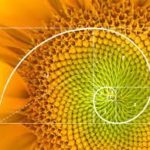Biomimicry in UX Design
This article describes the newly emerging practice of biomimicry in digital design. It illustrates the current practices of designers who emulate biology in their work. The Vice President of software design at MentorMe incorporates the Fibonacci sequence into his work because it so often appears in nature. The Fibonacci sequence can be seen in the seeds on a sunflower. He argues that because this pattern is “natural,” it is inherently pleasing to humans. Toni Ojo, UK based designer, argues that humans derive aesthetic pleasure in the same way animals do when choosing a mate, like peacocks. In her dissertation, she also asserts that the way users expect a website to behave is similar to a predator and its prey. The article conclude with steps on how one may go about biomimicry, recommending that anyone can start with an elementary study of biology.
Learn about our two Decals!
 Click here to find out more about our Fall Bioinspired Design Decal and our Spring Bioinspired Design in Action Decal – ALL MAJORS are welcome.
Click here to find out more about our Fall Bioinspired Design Decal and our Spring Bioinspired Design in Action Decal – ALL MAJORS are welcome.Berkeley BioDesign Community
 Click here to learn about the BioD: Bio-Inspired Design @ Berkeley student organization or here to signup for more info.
Click here to learn about the BioD: Bio-Inspired Design @ Berkeley student organization or here to signup for more info.Search
Student Login




I imagine that the neurological circuits underlying these processes are governed by both 2d spacing maps with their brains as…
to reduce the impact of car accidents, it may be possible to study the force diverting physics of cockroaches to…
you see this type of head-bobbing stability in many avian creatures related to pigeons like chickens. the head ability to…
not like they taught horses how to run! this is an example of convergent evolution where both sea creatures and…
The brain functions in a similar way with neuronal connections. our brains are able to utilize the multiplicity of connections…